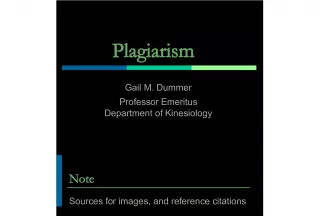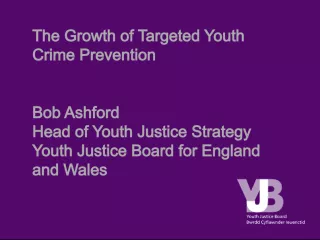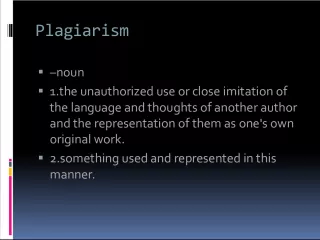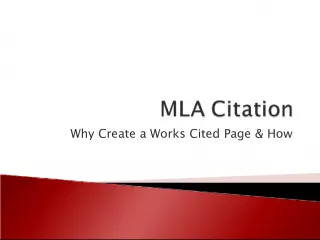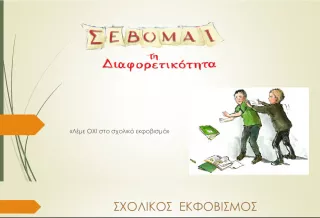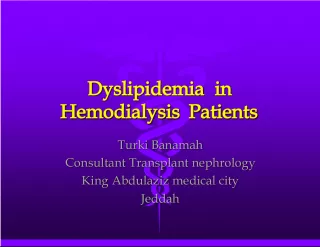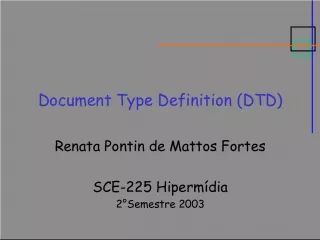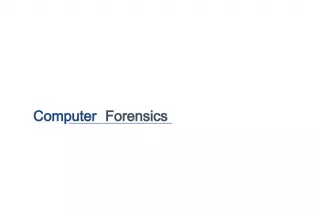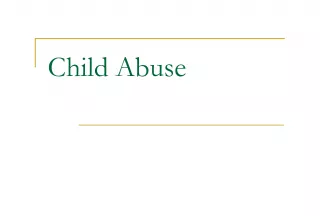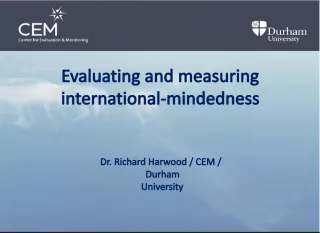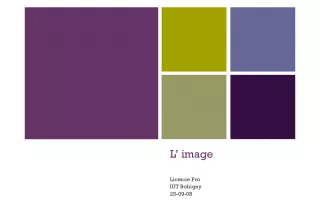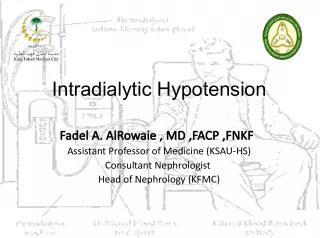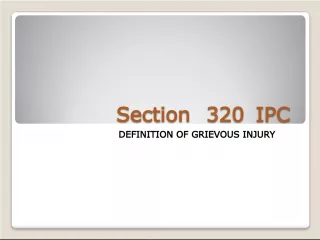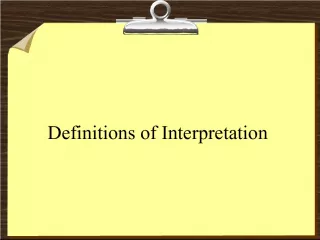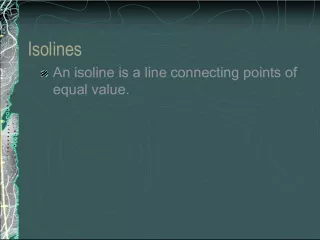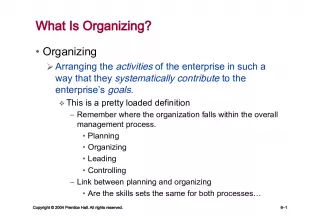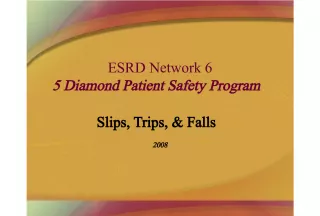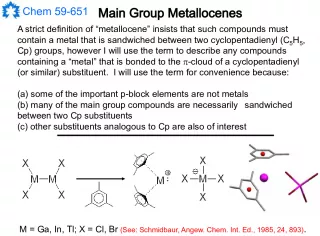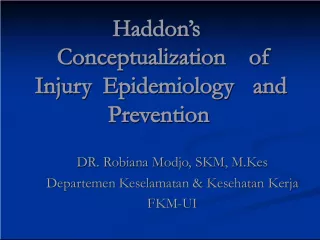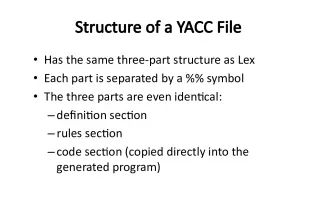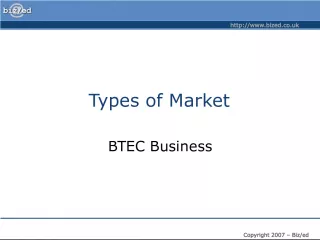The Importance of Understanding Plagiarism: Types, Definition, and Prevention Strategies
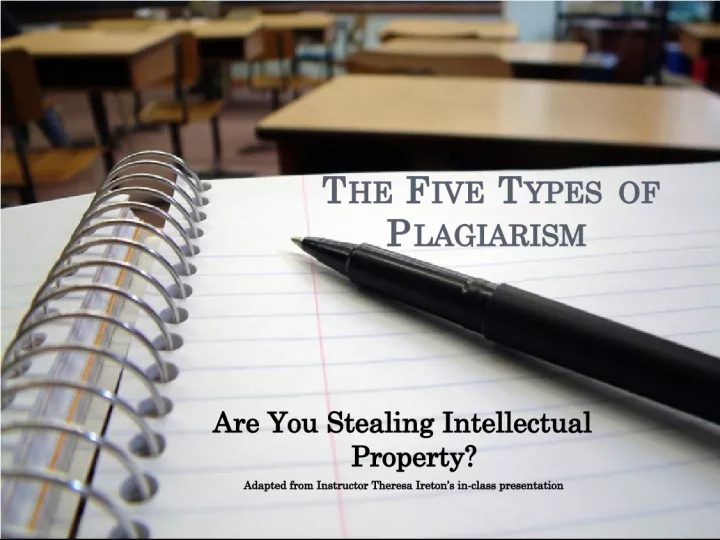

This article explores the five types of plagiarism, the definition of plagiarism, and strategies to avoid it. It includes tips on how to isolate the reasons why plagiarism occurs, identify and understand the different types of plagiarism, and integrate plagiarism prevention into your writing process.
- Uploaded on | 3 Views
-
 ernestmurphy
ernestmurphy
About The Importance of Understanding Plagiarism: Types, Definition, and Prevention Strategies
PowerPoint presentation about 'The Importance of Understanding Plagiarism: Types, Definition, and Prevention Strategies'. This presentation describes the topic on This article explores the five types of plagiarism, the definition of plagiarism, and strategies to avoid it. It includes tips on how to isolate the reasons why plagiarism occurs, identify and understand the different types of plagiarism, and integrate plagiarism prevention into your writing process.. The key topics included in this slideshow are plagiarism, intellectual property, original thoughts, proper citation, prevention strategies,. Download this presentation absolutely free.
Presentation Transcript
1. T HE F IVE T YPES OF P LAGIARISM Are You Stealing Intellectual Property? Adapted from Instructor Theresa Iretons in-class presentation
2. What is Plagiarism? Presenting anothers original thoughts or ideas as your own Using anothers exact words without proper citation
3. S TRATEGIES TO A VOID P LAGIARISM Isolate the reasons why plagiarism occurs Identify the different types of plagiarism Integrate plagiarism prevention
4. U NINTENTIONAL P LAGIARISM Paraphrasing poorly: changing a few words without changing the sentence structure of the original, or changing the sentence structure but not the words. Quoting poorly: putting quotation marks around part of a quotation but not around all of it, or putting quotation marks around a passage that is partly paraphrased and partly quoted. Citing poorly: omitting an occasional citation or citing inaccurately. MLA handbook for writers of research papers. (7 th ed.). The Modern Language Association of America. New York: 2009. Print.
5. I NTENTIONAL P LAGIARISM Passing off as ones own pre-written papers from the Internet or other sources. Copying an essay or article from the Internet, on- line source, or electronic database without quoting or giving credit. Cutting and pasting from more than one source to create a paper without quoting or giving credit. Borrowing words or ideas from other students or sources without giving credit. MLA handbook for writers of research papers. (7 th ed.). The Modern Language Association of America. New York: 2009. Print.
6. P LAGIARISM P REVENTION : B E AUTHENTIC Develop a topic based on previously written material but write something new and original Rely on opinions of experts on a topic but improve upon those opinions Give credit to researchers while making your own contribution Follow a standard documentation method such as MLA or APA format
7. T HE F IRST T YPE OF PLAGIARISM Plagiarism of Words The use of anothers exact words without citing the author Incorrect Plagiarism is the reproduction of someone elses words, ideas or findings and presenting them as ones own without proper acknowledgement. Correct Plagiarism is the reproduction of someone elses words, ideas or findings and presenting them as ones own without proper acknowledgement (Undergraduate Course Handbook: 2008, p.24)
8. T HE S ECOND T YPE OF PLAGIARISM Plagiarism of Structure Paraphrasing anothers words by changing sentence construction or word choice with citation Paraphrasing while maintaining original sentence construction with acknowledging the source
9. T HE T HIRD T YPE OF PLAGIARISM Plagiarism of Ideas Presenting anothers ideas as your own without giving the person credit Submitting a paper without citing or incorrectly citing anothers ideas
10. T HE F OURTH T YPE OF PLAGIARISM Plagiarism of Authorship Turning in a replication of anothers work Submitting a paper that you got off the internet or from a friend and presenting it as your own
11. T HE F IFTH T YPE OF PLAGIARISM Plagiarism of Self The use of previous work for a separate assignment Although these were you original words and thoughts, receiving credit for a previous assignment is considered cheating
12. T HE P ENALTIES OF P LAGIARISM Although plagiarism can be intentional or unintentional, both have consequences. A meeting with the VP of Students will be scheduled to determine an outcome Receiving zero on the assignment Failing the course Suspension Expulsion
13. T O L EARN MORE Visit www.centralia.edu/academics/writingcenter/ or http://owl.waol.org/
